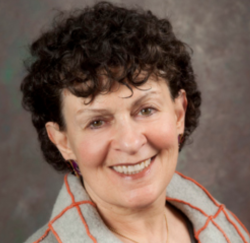“Home is where our story begins…” so the argument that a child’s early experiences at home perpetuate social inequality is understandably contentious. That controversy garnered new attention in 1995 when researchers Betty Hart and Todd Risley reported that children of highly educated, professional parents heard many more words addressed to them than children of less educated parents. Counting the number of words per hour addressed to children in the homes of professional families, working-class families, and families on public assistance, they extrapolated that by the time children were 4-years-old, advantaged children had roughly 30 million more words addressed to them than the least advantaged—a finding often referred to as the “30 million word gap.” Subsequent study of the same children, along with other research, established that differences in early language experiences are related to a host of academic and social differences among children and the adults they become. Language is the currency of education and is associated with reading ability, income, healthcare outcomes, and high school graduation rates. Therefore, children who start out with lower language skills are projected to have lower school readiness scores and will follow a dampened trajectory through school and life.
Though subsequent research has supported a word gap, a recent “failed replication” published in the journal Child Development challenges the original Hart and Risley finding. Douglas Sperry, Linda Sperry, and Peggy Miller make two points based on recordings made in homes of preschool children in five different primarily poor and working-class communities. First, they find variation in the amount of speech addressed to children and that this variation is unrelated to socioeconomic status. Second, Hart and Risley defined children’s environments too narrowly by counting only speech addressed to the child. When ambient speech within the child’s hearing is counted, differences related to socioeconomic status disappear.
As researchers in the field of language development, we take issue with Sperry et al.’s empirical claims. Further, we do not support their conclusion nor the policy implications that arise in its wake.
On the science
Perhaps the most critical problem with the purported “failed replication” is that the newly published research is not a replication. The Sperry team only studied families who were of middle- or low-income status. The original study that noted a 30 million word gap calculated amount of talk in the highest income families (the “professional” group) vs the lowest income families (the “welfare” group). The Sperry research contains no high-income group! Although one could quibble about the 30-million-word count (e.g., was it 25 million?) or the labels that they used to represent the income groups, the fact remains that there are many studies that affirm a large difference between both the amount and quality of language used in parent-child interactions associated with socio-economic disparity.
Their second claim—that variation exists within income levels—is an important one but has already been well established in the literature. Variation within groups does not negate the finding that overall, the average amount of language addressed to children across income groups is widely different.
Finally, the Sperry team raises the interesting question of the role of overheard language in the home. This is a topic of legitimate scientific debate and inquiry. But we do know the answer to this question for children just beginning their language-learning journey. As the Sperry team acknowledge in their paper, these children learn best from speech directed to them by their caregivers creating conversations that build on children’s interests. There is no debate here. Differences in the quantity and quality of child-directed language are associated with differences in children’s language growth—both within and between socioeconomic strata.
Thus, the Sperry et al., claims rest on the questionable assertion – in the absence of data — that overheard speech is equally supportive of children’s language acquisition as is child-directed speech. The science tells us that this is not true.
On the policy
Data from Hart and Risley, among many others, offered renewed focus on the importance of building strong language as a foundation for learning. In fact, a recent study by Amy Pace and her colleagues found that a child’s language competency in kindergarten predicts later language, math, reading, and social abilities up to 5th grade and is the best early indicator of success. Because language is so important as a foundation for learning, the Hart and Risley findings motivated programs like Providence Talks, Vroom’s brain-building tips, and the Too Small to Fail initiatives, all of which put the lens on the power of early learning for later success.
The new paper by Sperry and colleagues is already being used to fuel a discussion that the socioeconomic-status-related word gap has been greatly exaggerated. This is a shame. While Sperry and colleagues correctly argue that we need to learn more about how children from all backgrounds learn and develop, that argument should not and must not undercut the significance of what we soundly know about child development: Young children do not profit from overheard speech about topics of interest to adults. Public programs and intervention efforts should continue to encourage caregivers and teachers to talk with young children about child-friendly topics. Narrowing achievement gaps and social inequities requires closing gaps in this important area of early experience.








Commentary
Talking with children matters: Defending the 30 million word gap
May 21, 2018